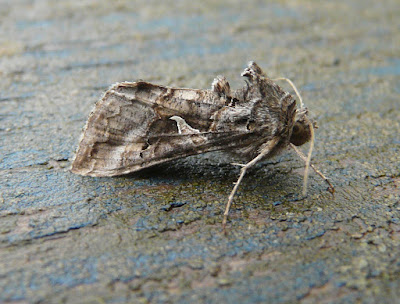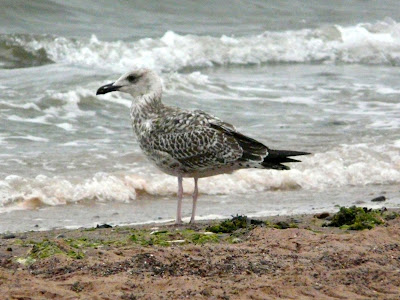Beautiful China-mark
Derek, Nick, Martin and I ran a couple traps at Exminster Marshes last night. We were fortunate that conditions were spot on and we recorded a nice selection of species that included a few immigrants - 2 Silver Y, 2+ Rusty-dot Pearl, 2+ Rush Veneer, 1 Vestal and 1 Vagrant Piercer (Cydia amplana). All four China-mark species were recorded as well as some other marshland species, notably Bulrush Veneer (Calamotropha paludella), Cream-bordered Green Pea and Small Rufous (c10+ individuals). Otherwise the evening's list included Peach Blossom, Blood-vein, Small Fan-footed Wave, Dwarf Cream Wave, Common Carpet, Green Carpet, Scallop Shell, Lime-speck Pug, V-Pug, Double-striped Pug, Treble-bar, Small Seraphim, Magpie, Brimstone Moth, Swallow-tailed Moth, Willow Beauty, Common Wave, Dingy Footman, Jersey Tiger, Flame Shoulder, Large Yellow Underwing, Lesser Broad-bordered Yellow Underwing, Least Yellow Underwing, Small Square-spot, Setaceous Hebrew Character, Six-striped Rustic, Square-spot Rustic, Smoky Wainscot, Common Wainscot, Common/Lesser Common Rustic, Mottled Rustic, Straw Dot, Spectacle, Mother of Pearl, Pale-streak Grass-veneer, Common Marble (Celypha lacunana), Rush Marble (Bactra lancealana), Dark-triangle Button (Acleris laterana), Marsh Grey (Eudonia pallida), Light Brown Apple Moth and presumed Water-mint Conch (Phalonidia manniana).
A big thank you to Derek for organising and Nick for driving.

Brown China-mark
Small China-mark
Ringed China-mark
Bulrush Veneer - Calamotropha paludella
Small Rufous - this species, Six-striped Rustic and Flame Shoulder turned up in reasonable numbers last night but the most common species was Brimstone Moth.
Gold Spot - at least five of this stunning species was trapped.
Water-mint Conch - Phalonidia manniana or the recently split Loosestrife Conch (Phalonidia udana) - presumably the former?
Depressaria sp
Pale-streak Grass-veneer - Agriphila selasella - it was good to catch a couple clear-cut examples of this species last night. At least I hope they're clear-cut!
Pale-streak Grass-veneer
Vagrant Piercer - Cydia amplana - the best of the immigrant species.
Vestal

























































